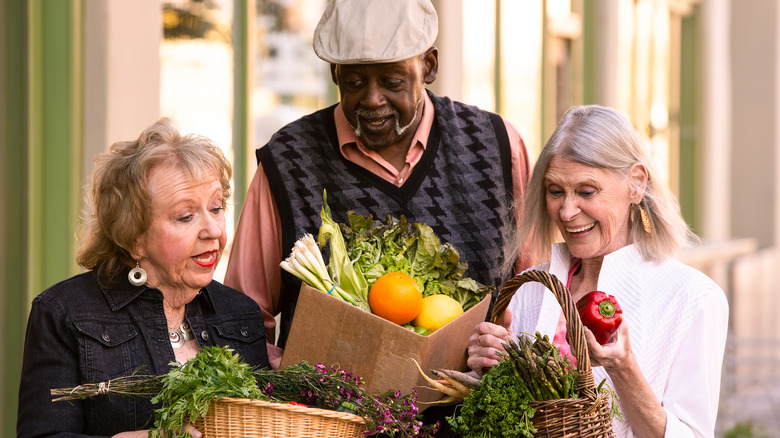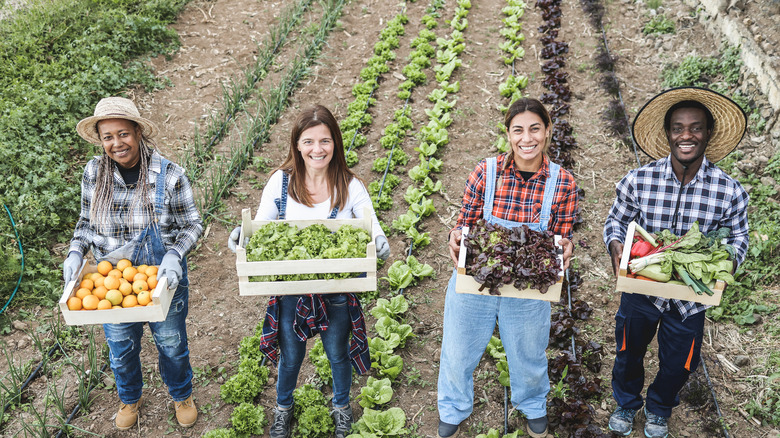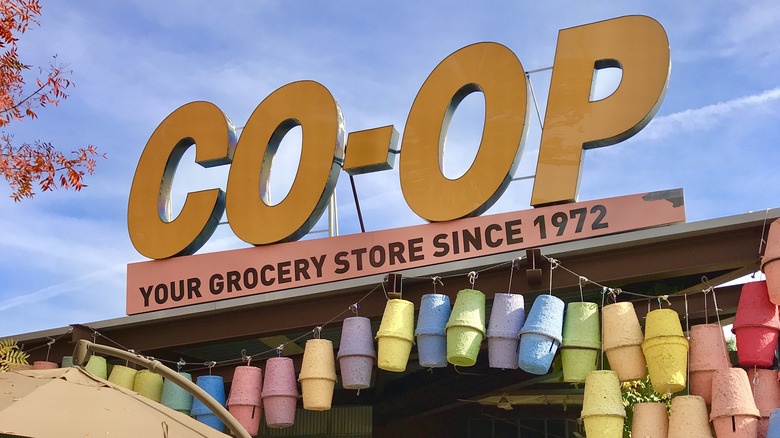The Perks Of Shopping At Co-Op Grocery Stores
Lucky shoppers living near co-cop grocery stores often gush over the benefits and frequently report an overall positive shopping experience. But to the uninitiated, co-ops may appear as just another place to pick up their weekly groceries — and most places carry pretty much the same good these days, right? Not so fast, say the 1.3 million-plus consumers who shop at roughly 230 American co-op stores tracked by the National Co+op Grocers (NCG) organization. Spanning 39 states and counting, these community-based markets come with a lot of perks for shoppers.
To start with, those who join a grocery co-op become what's known as consumer-owners, meaning they actually own part of the cooperative entity. Each co-op has its own structure, but many offer economic participation in the form of discounts, free cooking classes, and other perks — but also by receiving a share of annual profits. Referred to in terms such as a "patronage dividend," the portion of net profits after operational expenses, re-investment, and other criteria is returned to members when appropriate.
But the potential for financial gain is far from the only benefit of shopping at a grocery co-op. The food almost always comes from local growers, brewers, and vendors, meaning it's generally fresher and of higher quality. It's also regional, so members can find their favorite items while supporting their farmer and vendor neighbors.
Co-ops often carry items outside mainstream chains, giving more customized food choices. And then there's a greater-good aspect that's valued by many co-op shoppers.
Co-ops encourage social and environmental responsibility
Those who embrace the cozy community feel of in-person co-op shopping also tend to appreciate having options that cater to food allergies, specialized dietary needs, or the desire for organic produce — even sustainable fish! In a food co-op, it's common to spot labels such as certified organic, free-range, cage-free, or non-GMO produce and packaged goods.
Social responsibility tends to thrive in these types of cooperative venues, ranging from fair-trade products to animal welfare standards, consideration of farmworker treatment, and sustainable farming and aquaculture practices. There's often a reduction of environmental and carbon footprints as well, from the buyers who shop in their own neighborhoods to the local produce that farmers can sell without long fuel-heavy transportation and energy-dependent refrigeration during storage.
A food product can earn individual USDA program designations of "local" if it's sold within the same state or within 400 miles from where it originated. Some co-ops are even more stringent, requiring goods to come from a 200- or 300-mile radius of the store. Outside of co-ops, shoppers living in urban environments or non-farming regions can easily be buying produce that's instead journeyed thousands of miles.
And it's not just produce; Co-ops selling honey, jams, cheeses, vinegar, spices, meats, eggs, and bread are supporting community apiaries, bakeries, fromageries, cattle ranchers, poultry farmers, and more. Social contributions expand to include job creation and keeping money in local government coffers, which in turn enhances community life.
A few considerations for co-op grocery shopping
Some people shy away from shopping at a food co-op because there's a perception of high point-of-purchase prices, which can douse enthusiasm for all the community benefits involved. However, the quarterly or annual dividends or rebates offered by many co-ops mitigate some of that upfront shopping cost. In addition, co-ops, as opposed to big-chain supermarkets, are free to sell products without a driving need for profit, sometimes actually resulting in lower prices than its competitors — all for generally better quality goods.
Larger co-ops can also order in bulk from local suppliers and pass those savings on to member-owners. However, since the stores are usually smaller and cater to fewer and choosier shoppers in general, higher prices can appear in certain categories. Co-ops are also less likely to carry personal care products, cleaning supplies, or other household needs –– though many do offer local, handmade, or chemical-free alternatives, typically at a higher cost than mass-produced versions.
Seasonal availability for produce can also wane in the winter months for stores depending on local production, compared to nationwide chain grocers who ship items in from warmer locales or even international distributors. But eating based on Mother Nature's inherent cycles can be both satisfying and surprising, with local heritage and heirloom vegetables like corn and fruits not available outside the co-op environment. Plus, there's the human contact and warm community interaction that sustains us all until spring and summer come around again.



